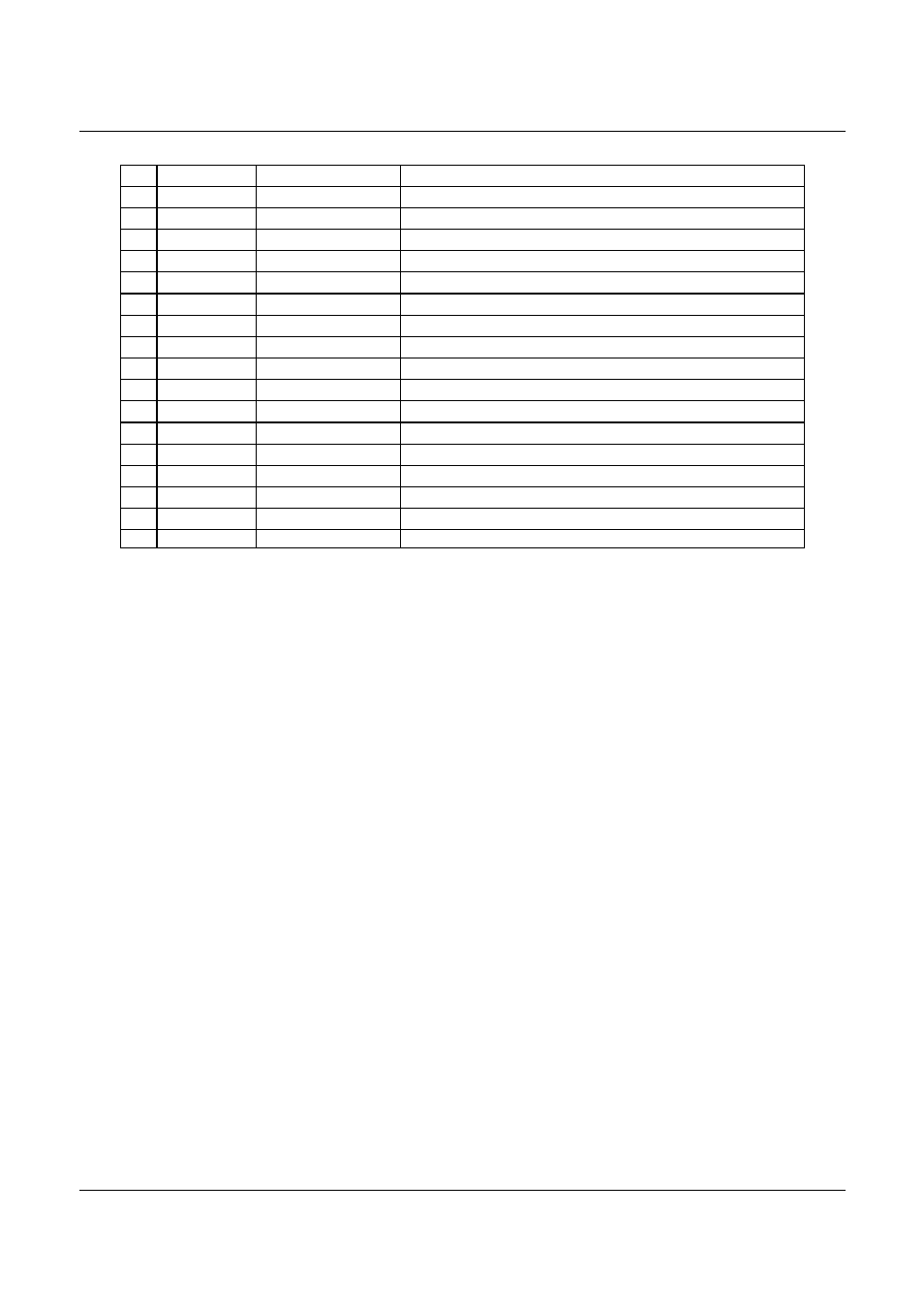Trigger scpi commands and lists – AMETEK ReFlex Programming Manual User Manual
Page 70

ReFlex Power™ Programming Manual
DC Module Remote Programming
66
M380056-03 Rev M
Bit
Hex Value
Mnemonic
Description
15
0x00008000 UVPP12V
+12V Under Voltage Fault
16
0x00010000 OVPP12V
+12V Over Voltage Fault
17
0x00020000 UVPM12V
-12V Under Voltage Fault
18
0x00040000 OVPM12V
-12V Over Voltage Fault
19
0x00080000 GNDF
Ground Fault
20
0x00100000 OCLF
Outer Control Loop Fault
21
0x00200000 ICLF
Inner Control Loop Fault
22
0x00400000
RESERVED
23
0x00800000
RESERVED
24
0x01000000 PRIENA
Primary DC Bus Enable Fault
25
0x02000000 PRST
Power-on Reset Fault
26
0x04000000 GRPF
Group Fault
27
0x08000000 MDENA
Module Enable False (Does not activate Fault Led)
28
0x10000000 CNVF
Converter Fault
29
0x20000000 PAOC
Primary Average Overcurrent Fault (PAOC or AVG_TRP)
30
0x40000000 Analog Fault
Analog Fault
31
0x80000000
RESERVED
Note: Turning off Supervisory Enables can allow permanent and catastrophic damage to the
Module to occur.
3.12
TRIGGER SCPI COMMANDS AND LISTS
The ReFlex Power system provides for two programming modes, these
modes are only available in the High Power and Low Power DC (HPDC and
LPDC) modules: the List/Trigger mode, and the Software Setpoint and
Ramps mode.
The List/Trigger mode (Section 3.12.1) provides the ability to program
accurate and tightly timed, externally-synchronized events ranging from
simple, synchronized output changes to complex multiple-step, multi-module,
externally and internally driven sequences (Lists), which can be driven by
hardware trigger signals.
The Software Setpoint and Ramps mode (Section ) provides the ability to
program a software-triggered voltage and/or current setpoint change, and to
ramp the supply output, with an execution latency of 10-20 mSec.
3.12.1
LIST
AND
T
RIGGER
C
OMMAND
O
PERATION
This section describes first the Trigger architecture and behavior, then
describes Lists and List/Trigger requirements. Each programmable High
Power and Low Power DC power module has a module level trigger input
and output signal as a part of its front panel control interface. The ReFlex
Power™ Controller has four general-purpose I/O signals, which are bussed to
